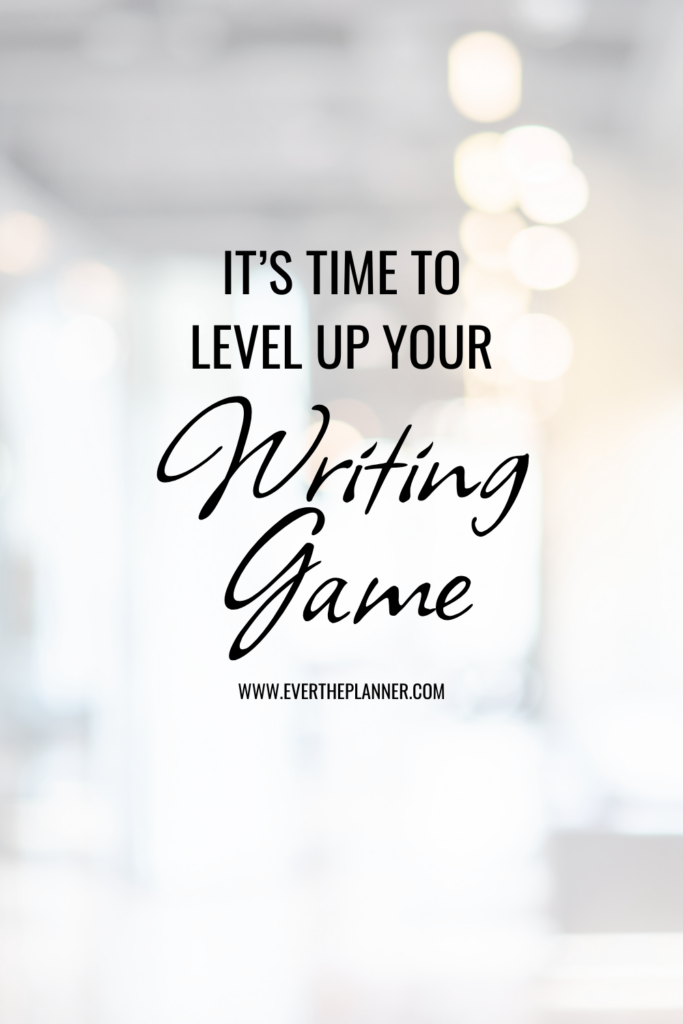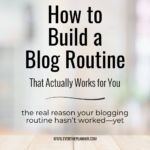That vs. Which: The Simplest Explanation You’ll Ever Read

Let’s be honest—grammar rules can feel overwhelming. And that vs. which? It’s one of those sneaky ones that trips up even experienced writers.
But here’s the good news: this rule is simpler than it sounds. And once you get it, you’ll start noticing the difference everywhere—in blog posts, articles, even your own writing.
In this post, I’ll walk you through the clearest, easiest way to understand the difference between that and which. Whether you’re proofreading your own blog or just want to feel more confident with your wording, you’re in the right place.
Let’s break it down.
The Real Difference Between “That” and “Which”
Here’s the simplest way to remember it:
- “That” is used when the information is essential to the meaning of the sentence.
- “Which” is used when the information is extra—nice to have, but not necessary.
Let’s look at it in action:
✅ That (no commas)
“The blog post that helped me grow my email list is still one of my most-read.”
→ The phrase “that helped me grow my email list” is essential—it tells us which blog post.
✅ Which (with commas)
“This post, which I wrote last month, is part of my email series.”
→ The phrase “which I wrote last month” adds extra information—it’s not essential to identify the post.
Think of “that” as the main ingredients in a recipe and “which” as the garnish. One is necessary, the other’s just a nice touch.
If you’ve ever heard the terms restrictive and nonrestrictive clauses, that’s what this rule is about—but don’t worry, you don’t need to memorize those to write clearly.
How to Know Which One to Use (Without Overthinking It)
If you’re ever unsure which word to choose, here’s the easiest question to ask:
Can I remove the phrase and still understand the sentence?
- If no → Use that (no commas needed)
- If yes → Use which (and set it off with commas)
Here’s a quick test:
“The tool ___ helps me schedule my posts saves me so much time.”
Can we remove “helps me schedule my posts” and still know which tool we’re talking about?
Nope—we need that info. So the correct word is: that.
Now try this:
“My planner, ___ I bought on Etsy, has lasted me all year.”
If we take out “I bought on Etsy,” we still know what we’re talking about—my planner.
So the right word is: which (with commas).
| That | Which |
| Essential Information | Extra Information |
| No Commas | Needs Commas |
Examples from Blogging & Everyday Writing
Let’s bring this to life with a few examples you might run into while writing blog content:
Example 1: “That” in Action (Essential Info)
“The freebie that helped me double my email list is now part of my welcome sequence.”
You need that extra detail to know which freebie—so “that” is the right choice.
Example 2: “Which” in Action (Extra Info)
“My welcome email, which I redesigned last week, now includes a stronger CTA.”
The redesign detail is extra—it’s interesting, but not essential to identify the email—so we use “which,” and it gets commas.
Example 3: Quick Contrast
“I use the headline analyzer **that gives me a score breakdown.”
“The headline analyzer, which is free to use, helps me improve my titles.”
See the difference? One gives essential info (which analyzer?), and the other adds a fun detail (oh cool—it’s free!).
If this still feels tricky at first, don’t stress.
It takes practice to hear the difference, and most readers won’t notice if you mix them up once in a while.
The goal here isn’t perfection—it’s simply leveling up your writing game.

Common Mistakes to Avoid
Even experienced writers second-guess that vs. which—so if you’ve been unsure, you’re in good company. Here are a few common slip-ups to watch out for:
❌ Using “which” when you mean “that”
It’s easy to default to “which” because it sounds a little more formal or polished. But when the info is essential, “that” is actually clearer—and that’s what matters most.
❌ Forgetting commas with “which”
If you’re using “which,” remember it should be set off with commas—before and after the phrase (unless it’s at the end of a sentence).
Example: “The template, which I downloaded last night, saved me tons of time.”
❌ Trying too hard to sound perfect
Overthinking your wording can slow you down or make your writing feel stiff. When in doubt, go for what sounds natural and keeps your message clear.
Your writing doesn’t have to follow every grammar rule to a T. As long as your meaning is clear and your voice feels like you—you’re doing great.
Quick Recap: That vs. Which—Made Simple
Still not sure how to tell the difference between that vs. which? Here’s your bite-sized takeaway:
- Use that when the info is essential to the sentence
→ No commas
→ “This is the tool that helped me grow my blog.” - Use which when the info is extra or descriptive
→ Add commas
→ “This tool, which I found last week, is so helpful.”
Ask yourself: Can I remove the phrase and still understand the sentence?
If no → that
If yes → which
If you want to go deeper on the grammar rule, Grammarly breaks it down here—but the quick version above is all most bloggers need to know.
Ready to Feel More Confident in Every Post?
Clear grammar helps your writing feel smoother and more professional—but you don’t have to be perfect to be effective.
Want to double-check your content before hitting publish?
Grab my Ultimate Proofreading Checklist for a quick, beginner-friendly way to catch mistakes and polish your posts.
Or if you’d rather have a second pair of eyes on your writing, I offer friendly, affordable proofreading for bloggers and solopreneurs—learn more here!





I have a natural affinity for grammar, but I can never figure out how to explain things to other people! In Junior High, I could diagram a sentence better than anybody else, and I even understood it! Now I’ve lost the knack for diagramming, and I think if I still had the skill, I could explain things better. I don’t think they even teach diagramming sentences anymore! Thank you for this little post. I’d love to see more!
Thanks so much for reading and commenting! I loved diagramming those sentences in school, too! I’m so glad this post was helpful. I’ve got more grammar breakdowns planned, so stay tuned—and if there’s anything specific you’d love to see covered, I’m all ears! -Lacey | Ever the Planner